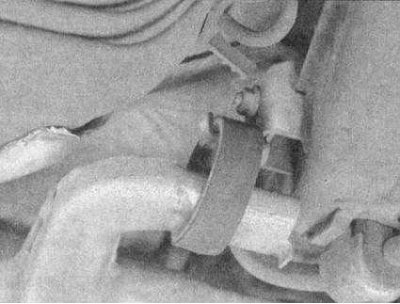The check should be carried out with a cold engine, so it is best to do it before the first trip of the day or no earlier than three hours after turning off the engine. Check the condition of the entire exhaust system, starting from the engine and ending with the cut of the exhaust pipe. Ideally, this test should be carried out with the vehicle hoisted up on a winch, when there is free access to it from below. If a winch is not available, jack up the vehicle and place it securely on jack stands.
1. Check pipes and pipe connections for signs of leakage, severe corrosion, and damage. Check the condition and reliability of fastening of all brackets and hangers of the system.

2. Inspect the rubber suspensions of the exhaust system for cracks.
3. At the same time, inspect the bottom of the car for holes, corrosion, open seams and other defects that allow exhaust gases to enter the car interior. Seal all openings with a suitable sealant.
4. The exhaust system, especially its supports and suspensions, is often the source of rumble and other unpleasant sounds. wiggle and; pull pipes, mufflers and catalytic converter (if provided). If these components come into contact with bodywork or suspension parts, replace the exhaust system fasteners.
5. Inspection of the inside surface of the exhaust pipe allows you to determine the current operating condition of the engine. The composition of the deposits in the pipe indicates the quality of the engine settings. If the inside of the pipe is black and sooty, this may indicate that the fuel system needs to be carefully checked.